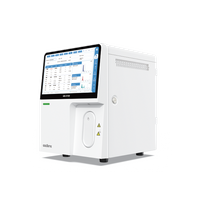- All
- Product Name
- Product Keyword
- Product Model
- Product Summary
- Product Description
- Multi Field Search

loading
GPP-100
GOLDSITE
| Availability: | |
|---|---|
Healthcare providers most often use D-dimer tests to help determine if someone has a blood clotting condition, which include:
Deep vein thrombosis (DVT or venous thrombosis): Deep vein thrombosis is a blood clot that develops in a vein deep in your body. The clot may partially or completely block blood flow through the vein. Most DVTs happen in your lower leg, thigh or pelvis, but they can also occur in other parts of your body including your arm, brain, intestines, liver or kidney.
Pulmonary embolism (PE): A pulmonary embolism is a blood clot in your lung that happens when a clot in another part of your body (often your leg or arm) flows through your bloodstream and becomes lodged in the blood vessels of your lung.
Disseminated intravascular coagulation (DIC): DIC causes too many blood clots to form in your body, which can cause organ damage and other serious complications. In addition to using a D-dimer test to help diagnose DIC, healthcare providers use the test to help monitor the effectiveness of DIC treatment.
Stroke: A stroke, or "brain attack," happens when a blood vessel in your brain becomes blocked or bursts.
Immunological testing of the D-dimer on GPP-100 and uses the principle of measuring absorbance in the cuvette. An optical sensor reads the light that passes through the cuvette. The light is absorbed by the fluid in the cuvette in direct proportion to the concentration of antigen-antibody complexes. The amount of light reaching the photodetector is converted into an electrical signal that is proportional or inversely proportional to the analyte concentration.

Healthcare providers most often use D-dimer tests to help determine if someone has a blood clotting condition, which include:
Deep vein thrombosis (DVT or venous thrombosis): Deep vein thrombosis is a blood clot that develops in a vein deep in your body. The clot may partially or completely block blood flow through the vein. Most DVTs happen in your lower leg, thigh or pelvis, but they can also occur in other parts of your body including your arm, brain, intestines, liver or kidney.
Pulmonary embolism (PE): A pulmonary embolism is a blood clot in your lung that happens when a clot in another part of your body (often your leg or arm) flows through your bloodstream and becomes lodged in the blood vessels of your lung.
Disseminated intravascular coagulation (DIC): DIC causes too many blood clots to form in your body, which can cause organ damage and other serious complications. In addition to using a D-dimer test to help diagnose DIC, healthcare providers use the test to help monitor the effectiveness of DIC treatment.
Stroke: A stroke, or "brain attack," happens when a blood vessel in your brain becomes blocked or bursts.
Immunological testing of the D-dimer on GPP-100 and uses the principle of measuring absorbance in the cuvette. An optical sensor reads the light that passes through the cuvette. The light is absorbed by the fluid in the cuvette in direct proportion to the concentration of antigen-antibody complexes. The amount of light reaching the photodetector is converted into an electrical signal that is proportional or inversely proportional to the analyte concentration.

We offer

















